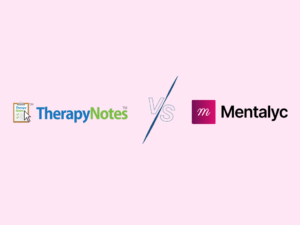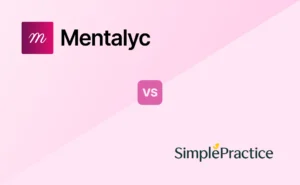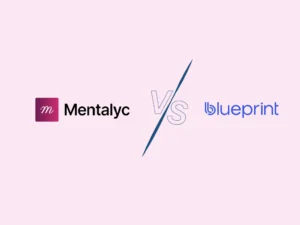Cultural Competence in therapy is about the therapist being aware, acknowledging, and accepting of cultural differences that might exist between them and the client, treating these differences with curiosity, compassionate inquiry and respect. Cultural competence helps the therapist maintain an unconditional positive regard towards their client, which in turn helps facilitate a strong therapeutic alliance between the two of them.
Cultural Competence in Therapy
At its core, cultural competence in therapy represents the systematic integration of cultural awareness, knowledge, and skills into therapeutic practice. It requires therapists to examine their own cultural lens while developing the capacity to understand, respect, and effectively work within their clients’ cultural frameworks. This foundational competency transforms therapy from a one-size-fits-all approach into a tailored, culturally responsive healing process.
Think of cultural competence as your ability to really “get” where your clients are coming from culturally and respond in ways that make sense for them. It is not just about knowing facts from different cultures (though that helps). It is about recognizing your baggage, understanding how culture shapes everything from symptom expression to treatment expectations, and adapting your approach accordingly.
We all carry implicit biases. Cultural competence in therapy means owning up to this reality and doing something about it. When you can acknowledge your limitations and stay curious about your client’s world, that’s when real therapeutic magic happens.
A culturally competent therapist and therapy session would mean – better therapeutic relationships, more accurate assessments, and treatment plans that actually work because they fit the person sitting across from you.
Documenting Cultural Competence in Progress Notes
Many therapists struggle to determine the appropriate cultural information to gather, and how to document it effectively. The key is documenting what is clinically relevant without stereotyping or over-focusing on cultural factors :
- Include cultural information when it directly relates to treatment goals, symptom presentation, or therapeutic process.
For example: Let’s take a client who reported that cultural expectations about emotional expression in his family make it difficult to discuss feelings of sadness directly. The therapist and the client then can explore alternative ways to communicate these emotions that feel more culturally acceptable.
- Avoid documenting cultural information that does not connect to treatment.
Writing “Client is Hispanic” without context is not helpful and could perpetuate stereotyping. Instead, document specific cultural factors that impact treatment: “Client expressed concerns about family involvement in treatment decisions, consistent with her cultural values emphasizing collective decision-making.”
- When cultural issues are central to treatment, document them regularly. When they’re background factors, less frequent notation is appropriate. Use your clinical judgment, but err on the side of documenting too little rather than too much unless it’s clearly relevant.
- Frame cultural factors as strengths and resources, not just challenges. Instead of “Cultural barriers prevent clients from engaging in treatment,” try “Client values family consultation before making major decisions, we discussed how to incorporate family input into treatment planning.”
- Mentalyc can significantly enhance your ability to document cultural competence in therapy effectively. Mentalyc can help streamline the process of creating detailed progress notes by suggesting relevant cultural considerations based on your session content.
Why This Matters More Than Ever
Back in 2002, the Institute of Medicine dropped a bombshell with their “Unequal Treatment” report. Minority clients were getting worse healthcare across the board, even when insurance and money weren’t factors. The report pointed fingers at provider bias, stereotyping, and plain old prejudice as major culprits. This highlights the need to incorporate cultural competence in our therapy spaces.
Minority populations deal with higher rates of mental health issues but consistently receive subpar treatment. They are more likely to be misdiagnosed, less likely to stay in treatment, and often face barriers that would make anyone want to give up on therapy altogether.
Some reasons that exacerbate the impact on minority population would be language barriers and the stigma that many cultures attach to mental health treatment. Add in provider bias (whether conscious or not), and you’ve got a perfect storm of healthcare inequality. When therapists lack cultural awareness, they might completely miss cultural expressions of distress or dismiss cultural strengths that could be powerful treatment resources.
On the other hand, when the clients feel genuinely understood and respected within their cultural context – they stick to their treatment longer, participate more actively and openly, and see more productive outcomes.
Cultural Considerations
Every client brings multiple cultural identities into your office. Religion, race and ethnicity can completely reshape how someone understands mental health. For some clients, psychological symptoms might be viewed through a spiritual lens, and ignoring this perspective could derail treatment before it starts.
- Immigration status: This creates its own set of challenges. Recent immigrants might be dealing with acculturation stress on top of whatever brought them to therapy. Refugees carry trauma histories that require specialized understanding. Even documentation status can affect how comfortable someone feels accessing services.
- LGBTQ+ clients: They face unique stressors that straight, cisgender therapists might not immediately recognize. Minority stress, family rejection, workplace discrimination – these aren’t just background issues. They’re often central to understanding a client’s mental health struggles.
- Socioeconomic factors: A client worried about paying rent might have different priorities than someone with financial security. Educational background affects health literacy and expectations about the therapeutic process. Regional differences matter too – urban versus rural, different parts of the country, all of these shape cultural identity.
- Age adds another layer: Older clients might expect more directive approaches and have different ideas about family involvement in treatment. Younger clients might be navigating between traditional family values and contemporary cultural pressures.
When Cultural Incompetence Derails Treatment
Here is what happens when therapists miss the cultural boat: clients feel misunderstood, judged, or dismissed. They might smile and nod during sessions while planning their exit strategy. Or they might present a version of themselves they think will be more acceptable, which kills the authenticity therapy requires.
Misdiagnosis becomes more likely when cultural expressions get pathologized. What looks like “resistance” might actually be a cultural norm. What seems like “lack of insight” could be a different way of understanding mental health altogether.
The therapeutic alliance suffers big time. Clients hold back important information, minimize symptoms, or just stop showing up. You end up treating a surface version of the person instead of addressing their real struggles. Worse yet, you might actually reinforce the very systems of oppression that contributed to their mental health issues in the first place.
Building Your Multicultural Competence
Cultural competence in therapy can be broken down into five key areas that work together.
- Cultural awareness – basically, knowing yourself and your biases. This is not a one-time exercise. It is ongoing work that requires honest self-reflection about how your background shapes your clinical lens.
- Cultural knowledge- you need to understand different groups’ histories, values, and practices without falling into stereotyping traps. Remember, culture is way broader than race and ethnicity. It includes everything from sexual orientation to disability status to social class.
- Cultural skills are the practical stuff – how to conduct culturally sensitive assessments, adapt your techniques, work with interpreters effectively. These are learnable abilities that improve with practice and feedback.
- Cultural desire is your internal motivation to become culturally competent. This drive keeps you going when the work gets challenging and fuels your commitment to ongoing learning.
- Finally, cultural encounters give you opportunities to interact with diverse clients and test your knowledge and skills in real situations. Each encounter teaches you something new and keeps you humble about how much you still have to learn.
Blending Competence with Humility
Cultural humility brings something crucial to the table that traditional competence models sometimes miss. Instead of positioning yourself as the cultural expert, humility keeps you curious and client-focused. It acknowledges that clients are the real experts on their own cultural experiences. This approach recognizes that you will never know everything about every culture (impossible anyway), but you can stay open to learning from each person you work with. Cultural humility keeps you asking questions instead of making assumptions, which builds stronger therapeutic relationships and leads to better outcomes.
Making It Work in Real Practice
- Start by really understanding your community – Who lives there? What are the demographics? Where are the resource gaps? If there is a large immigrant population, what countries are they coming from? What languages are most common? This context matters for understanding your clients’ daily realities.
- Pay attention to broader social and political factors – Immigration policies, healthcare changes, local incidents – these all affect how comfortable different groups feel seeking services. Stay informed about issues that might be adding stress to your clients’ lives.
- Look at your own identity and how it affects your practice – If you’re a person of colour, consider how that shapes your work with diverse clients. If you’re white, reflect on implicit biases that might influence your clinical decisions and how clients might perceive you.
- Examine your office practices – Do they create a welcoming environment for everyone? Are interpreter services available? Do your intake forms use inclusive language? Is your waiting room decor representative of your community’s diversity?
Clinical Strategies That Actually Work
- During sessions, ask clients about their preferred pronouns. Do not assume anything based on appearance or name. Ask directly about cultural background and what aspects they think are relevant to their mental health concerns.
- Use assessment tools thoughtfully. If culturally adapted versions exist, use them. Interpret results within cultural contexts rather than applying universal standards that might not fit.
- Family genograms can be goldmines for understanding cultural background, family dynamics, and intergenerational patterns. They help clients see connections they might not have noticed and give you crucial context for treatment planning.
- Ask about experiences with discrimination, trauma, or harassment related to cultural identity. These experiences often get overlooked but can be central to understanding someone’s mental health struggles.
- Don’t forget to identify cultural strengths and resources. What cultural practices, beliefs, or community connections help this person cope? How can you incorporate these into treatment?
- Make treatment planning truly collaborative. Ask what clients want to achieve and how they prefer to work toward those goals. Check whether they’re comfortable with your suggested approaches or if cultural factors make certain interventions problematic.
Ethical Obligations and Professional Standards
- Cultural competence is not optional – When cultural factors exceed a therapist’s knowledge or comfort level, seek supervision, consultation or make appropriate referrals. Continuing education in multicultural counselling is an ongoing professional obligation, not a one-time requirement. If you are a student, it might be useful to grab your hands on a book that addresses these concerns in depth. I studied multicultural counseling using – Theories of Counseling and Psychotherapy: A Multicultural Perspective by Ivy and Ivy and I love how they have addressed the nuances of cultural competence.
- Be honest about your limitations – If you don’t understand something about a client’s cultural background, admit it and ask for help. Clients usually appreciate honesty more than pretending to understand when you don’t.
- Consider power dynamics in cross-cultural therapeutic relationships – How might differences in race, class, education, or other factors affect the therapeutic process? Address these directly when they seem to be impacting treatment.
Resources for Ongoing Development
- Professional organizations offer extensive training in multicultural competence. The American Psychological Association, American Counseling Association, and National Association of Social Workers all provide continuing education opportunities, competence assessments, and practice guidelines.
- Academic programs in multicultural counseling can deepen your knowledge base. Community organizations often provide valuable insights into local cultural dynamics and can help you understand resources available to different populations.
- Supervision and consultation are crucial for processing cultural issues and developing competence. Consider joining or forming peer consultation groups focused on multicultural practice. These provide ongoing learning opportunities and support for challenging cases.
- Read books, articles, and research by authors from diverse backgrounds. Attend cultural events in your community when appropriate. Travel, when possible, to broaden your perspective and challenge your assumptions.
Impact on Assessment and Treatment Planning
- Cultural factors significantly influence both diagnostic accuracy and treatment effectiveness. Symptoms might present differently across cultures. Help-seeking behaviors vary widely. Family involvement expectations differ dramatically between cultures.
- Consider cultural explanatory models for mental health concerns – How does this client’s culture understand what’s happening to them? What cultural treatments have they tried? What role do spiritual or traditional healing practices play in their worldview?
- Adapt your diagnostic thinking to account for cultural factors – DSM criteria were developed primarily with white, middle-class populations. They might not capture how distress manifests in other cultural groups. Use cultural formulations to supplement traditional diagnostic categories.
- Treatment planning becomes more effective when cultural factors are woven throughout the process. Consider cultural values when setting goals. Adapt interventions to fit cultural contexts. Incorporate cultural resources and community supports into treatment plans.
Ongoing Reflection
Regular reflection on cultural issues should be part of your routine clinical practice:
- Review cases for cultural factors you might have missed.
- Seek feedback from clients about cultural sensitivity – they’re often willing to share if you ask respectfully. For example – “I want to take a moment to acknowledge that our cultural identities play a big role in shaping our lives. I realise I may come from a different background than you. If there’s ever anything I say or assume that feels off, would you feel okay letting me know? I want this space to feel safe and affirming.“
- Keep a journal of cultural learning experiences, both successes and mistakes. Notice patterns in your cultural assumptions or blind spots.
Moving Forward
Our society keeps getting more diverse, which means demand for culturally competent mental health services will only increase. Therapists who develop these skills will be better positioned to serve their communities effectively while contributing to healthcare equity goals.
By combining cultural knowledge with genuine humility, mental health professionals can create more effective, respectful, and equitable treatment environments. This isn’t just about being politically correct or checking boxes. It’s about providing the best possible care to every person who walks through your door, regardless of their background.
References
West Coast University. (2024, January 31). Cultural Competence in Counseling. West Coast University.
Seales, J. L. (2022, June 14). Cultural Competence in Therapy: All You Need to Know. Psych Central.
Dada, V. (2023). Understanding cultural competence in mental healthcare.
Stubbe, D. (2020). Practicing cultural competence and cultural humility in the care of diverse patients. Focus, 18(1), 49–51.
The importance of cultural competence in mental health care. (2025).
Why other mental health professionals love Mentalyc

“Having Mentalyc take away some of the work from me has allowed me to be more present when I’m in session with clients … it took a lot of pressure off.”
LPC

“It takes me less than 5 minutes to complete notes … it’s a huge time saver, a huge stress reliever.”
Licensed Marriage and Family Therapist

“A lot of my clients love the functionality where I can send them a summary of what we addressed during the session, and they find it very helpful and enlightening.”
Therapist

“By the end of the day, usually by the end of the session, I have my documentation done. I have a thorough, comprehensive note … It’s just saving me hours every week.”
CDCII







